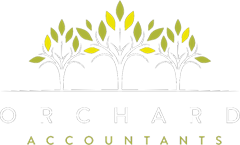Everything you need to know about Patent Box
One of the main ways that the Government encourages the use and commercialisation of innovative intellectual property is through tax relief.
The Patent Box is one such scheme, designed to provide a lower rate of Corporation Tax to profits earned on patented inventions.
Companies which elect into the Patent Box can benefit from a 10 per cent rate of Corporation Tax, provided they meet certain criteria:
- Liable to Corporation Tax
- Owns or has exclusively licenced-in the relevant patent
- The patent licence is granted by either the UK Intellectual Property Office, the European Patent Office or by the relevant body in certain European Economic Area nations
- Undertake qualifying development of the patent – meaning they have been involved in the underlying innovation or application of a patented invention.
Corporation Tax rates within the Patent Box will only apply to profits made from exploiting patents, not all profits made by the company.
Which profits qualify?
The proportion of your profits which qualify for reduced Corporation Tax will depend on the number of patents you own and whether you earn profits through other commercial activities.
Qualifying profits are classed as ‘intellectual property income’, and must come from at least one of the following:
- Selling patent rights
- Licencing out patent rights
- Infringement income
- Selling patented products, including bespoke parts and products incorporating the patented invention
- Manufacturing using a patented process
- Providing a service using a patented tool
To make identifying qualifying profits easier, you should consider keeping a separate record of profits made on patented inventions.
How do I elect into the Patent Box?
Your company must elect into the Patent Box to benefit from a reduced rate of Corporation Tax – within two years of the end of the accounting period in which the qualifying profits were made.
You can do this either in the computations accompanying your Company Tax Return or separately to HM Revenue & Customs (HMRC) in writing.
What if I hold the licence of a patent?
Some businesses choose to purchase a licence to use a patent instead of owning it outright, known as licencing-in.
Although you don’t legally own this patent, profits generated by a licenced-in patent may qualify under the Patent Box if you meet all of the following conditions:
- You have the right to develop the patented invention and to exploit it commercially
- One or more rights under the agreement is exclusive to your business
- You have exclusive rights throughout an entire national territory
You must also either be able to defend the rights of the patent by way of infringement proceedings or be entitled to the majority of damages awarded under successful proceedings.
Is the Patent Box right for my business?
If you meet the criteria and seek to commercially exploit a patented invention, then your business should consider electing to the Patent Box.
It provides a significant financial incentive to continue to innovate and improve the products, services and processes within your sector.
Tax reliefs under the Patent Box can be an excellent addition to a tax planning strategy, particularly for the most innovative businesses which draw substantial profits from patented inventions.
We can advise you on the Patent Box and other tax reliefs available to your business. Contact our team today to find out how we can streamline your business taxes.

